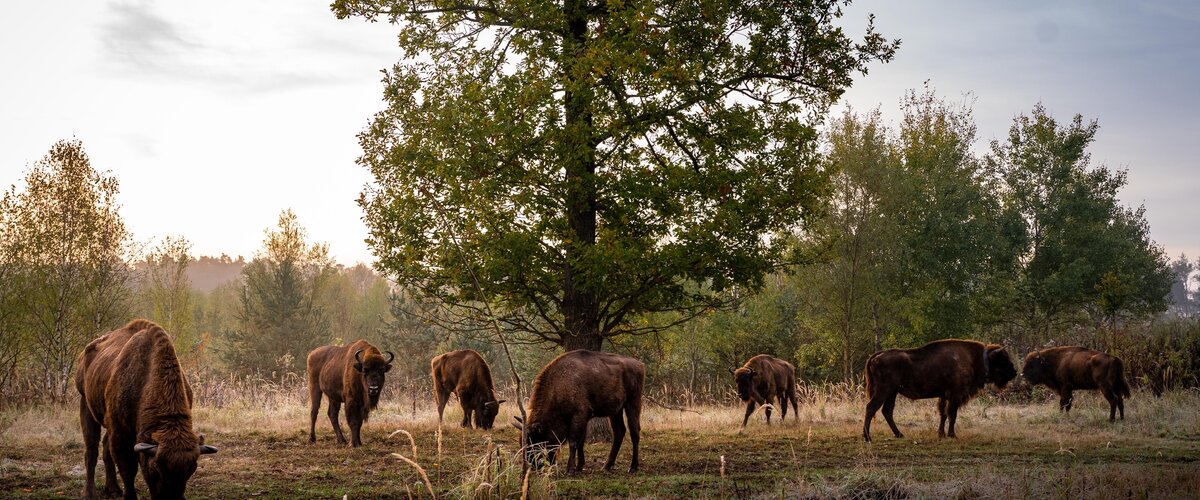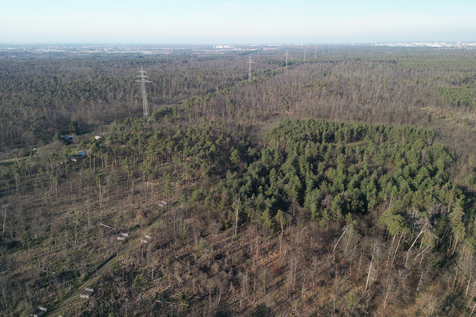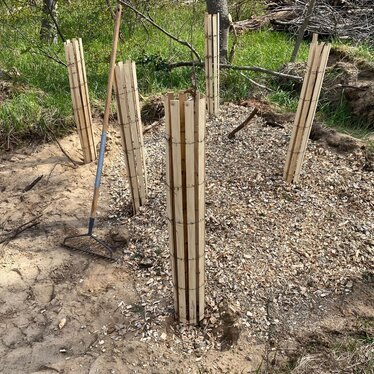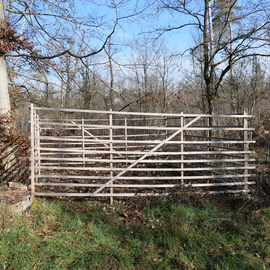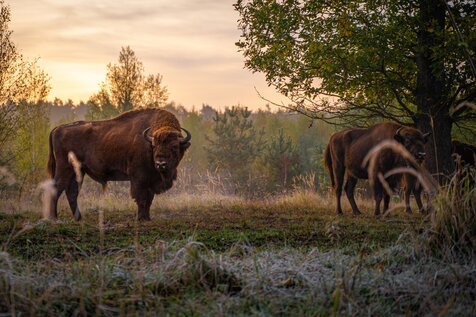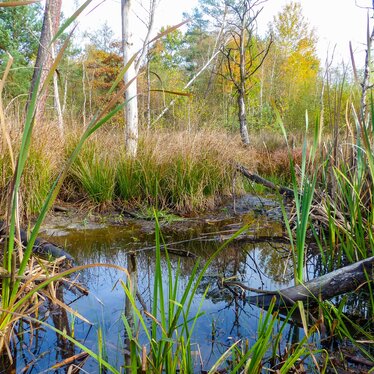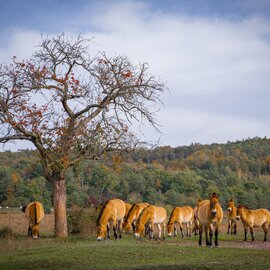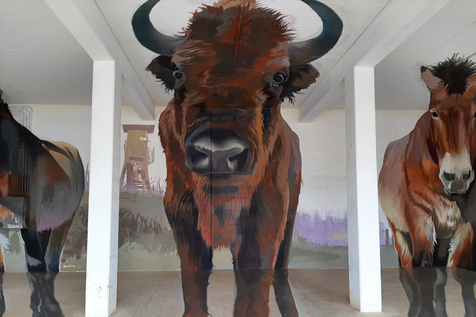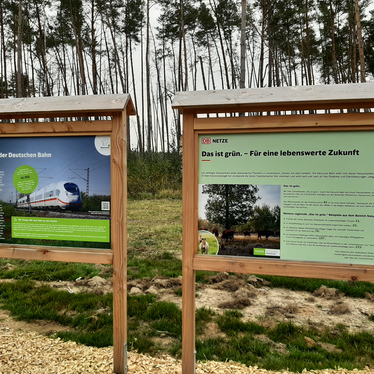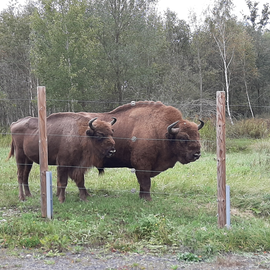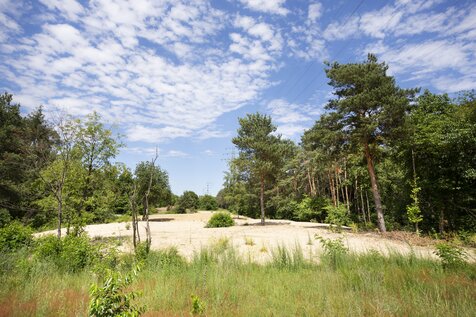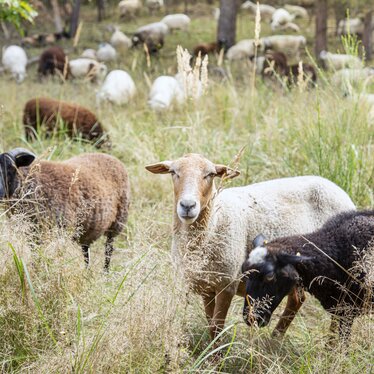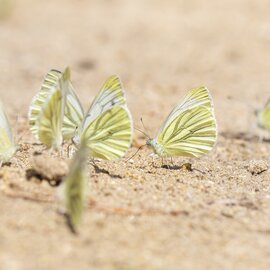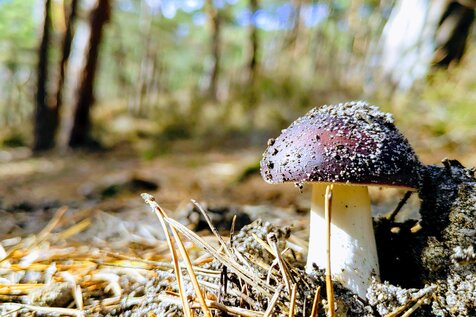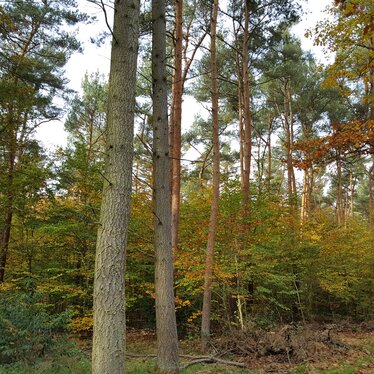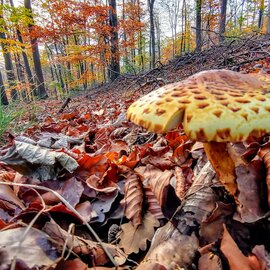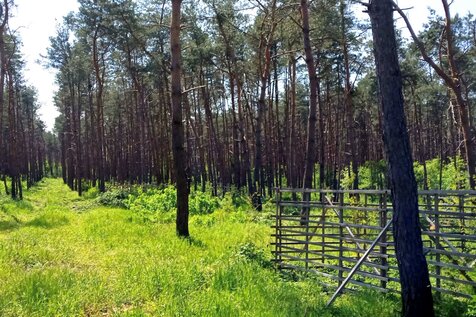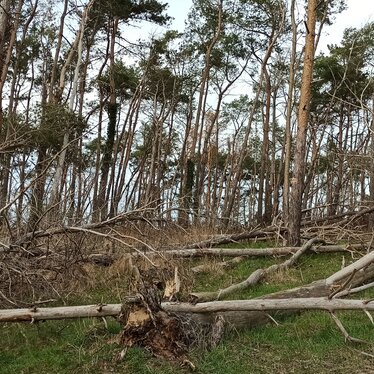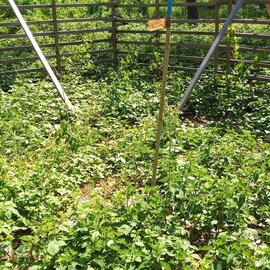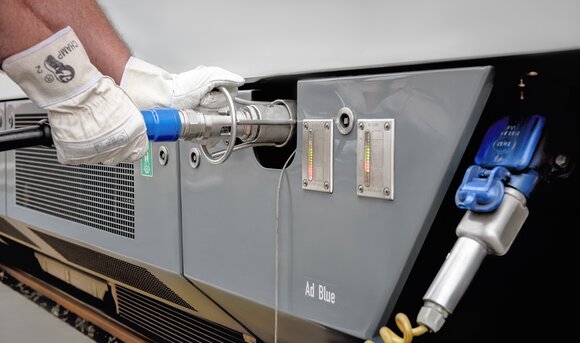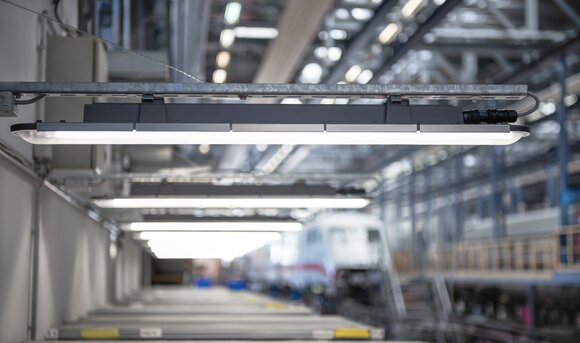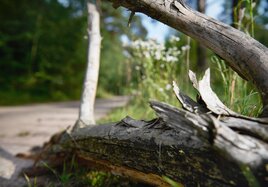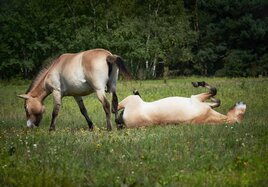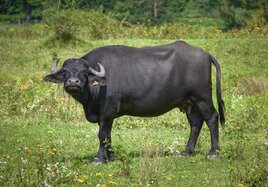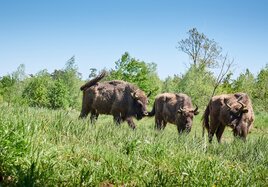Forests and meadows are reeling from drought, insects disappearing, plants and animals dying out: biodiversity has declined enormously in recent years and our ecosystem is suffering. The culprits include intensive farming monocultures, increased concreting over of land, and the consequences of man-made climate change. At Deutsche Bahn, we want to take action to tackle this trend. That is why we are working on sustainable solutions and are committed to specific initiatives for conserving flora and fauna. More traffic on the railways inevitably means expanding infrastructure, with sometimes unavoidable impacts on nature. To compensate for this, we are creating new habitats elsewhere.
DB Climate Forest – sustainable thinking
We planted the seeds of the DB Climate Forest project around ten years ago as part of the planned new Frankfurt–Mannheim line. Together with our partners – Bundesforst (the forestry division of the Institute of Federal Real Estate), Ökoagentur für Hessen, external environmental consultancies and local communities – we have already implemented various sub-projects in the southern Hesse region. Now we are going one step further: with the DB Climate Forest, we are expanding our commitment to forest protection – preserving existing forest biotopes and joining them together while also developing new forested areas This work will address the growing problem of forest dieback. As well as offsetting the land that will be lost to future construction works, we are also providing added value for nature, for the climate and for people.
Made for sustainability – the five sub-projects at a glance
On an area totaling approximately 500 hectares, we are joining up sensitive habitats in the southern Hesse region and making a lasting improvement in biodiversity. The DB Climate Forest comprises five different forest ecology sub-projects: climate-stable forest restructuring in the Pfungstädter Wald, the promotion of natural forest development with open clearings in the Wisentwald Muna Münster, the creation of inland dunes below the power lines in the Beckertanne near Darmstadt, the pilot project for a resilient forest edge in the Griesheimer Sand, and the preservation of old sparse oak forests in the Beckertanne.
new trees
for a climate-stable mixed forest
Forest restructuring in the Pfungstädter Wald
If the forest near Pfungstadt is to survive, it needs to be sustainably restructured. The hot, dry summers of recent years have shown how weak and vulnerable the existing monoculture forest has become. The conifers are badly damaged – many already dead – and are easy prey for bark beetles, Maybugs and various plant diseases. On an area of around 250 hectares, Ökoagentur Hessen will therefore plant over 100,000 new trees and shrubs on our behalf by 2030. The aim is to create a climate-stable mixed forest of native species such as oaks, hornbeams and wild service trees. Nine native tree and shrub species are planted together in what are known as nests. The planting sites are then covered with woodchippings to protect them from the dry conditions and from browsing by wild animals. This is because the fresh buds are at the top of the menu for deer and other wild animals.This allows a richly structured forest to emerge that offers protection and habitat to many animal species while also being able to withstand the changing climatic conditions.
Wisentwald Muna Münster
Wisentwald Muna Münster is located on a site of around 260 hectares near the community of Münster, east of Darmstadt. The former US Army base, unused since the early 1990s, has been largely left to nature. This has allowed the emergence of a unique natural forest complex that provides a habitat for many animal and plant species. Muna Münster is also home to a herd of bison and wild Przewalski's horses. Back in 2011, we began our first conservation measures on the site in order to permanently preserve the tree population, some of which is already 150–200 years old, and to develop the area into a natural forest. Since 2020, the animals have been helping us to create a very special ecosystem on this site. As experts in grazing forest areas, our four-legged friends ensure that the open clearings on the predominantly forested terrain do not become too overgrown. Herbs, grasses, mosses, twigs, leaves and lichens are all on their menu. By trampling and grazing open areas, they protect them from increasing scrub encroachment. As an additional benefit, their dung attracts various insects, which in turn serve as a food source for numerous bird species.
Drainage ditches are also being removed from these areas to allow "rewetting". This creates swamp-like structures that can slowly develop into bogs – an important carbon store.
Wisentwald nature discovery trail
In October 2023, we opened the Wisentwald nature discovery trail, the only one of its kind in Germany, on the grounds of the Muna. The 1.5-kilometer-long trail offers exciting insights into the biological diversity on site at various stations and provides information about the forest ecosystem. From a barefoot trail and a viewing platform with panoramic views of bison and Przewalski's horses to graffiti artwork in 3D look on the walls of the old bunkers: the nature trail offers diverse and fun activities for the whole family.
Since March 2024, the permanent exhibition "MUNATUR - von der Munitionsanstalt zum Biotop" has also been open in one of the former bunkers. The exhibition, designed by Büro für Erinnerungskultur Babenhausen, traces the eventful history of the Muna in images, text and sound.
Together with the Federal Real Estate Agency and the municipality of Münster (Hesse), we are thus creating a special nature and learning site and further contributing to the ecological balance of the new expansion route.
Beckertanne – inland dunes along the power line
Beneath the high-voltage power lines in the forest to the west of Darmstadt, we are working together with Ökoagentur Hessen to restore a former dune landscape in the "Binnendünen Stromtrasse Beckertanne" project. For several decades, the power lines here ran just 20 meters above the ground, meaning that the land beneath had to be kept free of trees and was regularly mown. This created a long strip of species-rich, sandy dry grassland and steppe grasses. When mowing ceased after the modernization of the power line, which now runs at a height of 50 meters, the forest began to reclaim the area. Rare species and habitats disappeared. In 2018, we therefore began restoring the old dune landscape together with Ökoagentur für Hessen. Since then, sheep have been used to graze the land. The wind has formed new dunes using sand excavated from construction sites around Darmstadt. The open sandy areas and the abundance of flowers provide habitat and food for numerous insects, attracting many species of birds and bats. Reptiles also find plentiful feeding and breeding places here.
Beckertanne – sparse oak forest
On a 20-hectare site east of the A67 motorway near Darmstadt lies the Beckertanne. The area was used for many years as a US Army training ground. Together with two other sub-areas, it forms a recognized fauna-flora habitat. At the southern end of the site and adjacent to it, there is a sparse oak forest of around 5 hectares. With targeted measures for sustainable grazing using sheep and donkeys, we are promoting biodiversity in the area and ensuring that many different bird and insect species colonize the site in the future. By protecting and preserving old and dead wood, we are also securing habitat for animals that prefer dry and warm conditions, such as the now very rare great capricorn beetle.
Resilient forest edge in the Griesheimer Sand
In the Griesheimer Sand, we are trialing the construction of a graded forest edge where the forest meets the railway line. The aim is to create a graded and species-rich forest edge along the future route of the new Frankfurt–Mannheim line, even before construction actually begins. The graded forest edge will ensure that the trees behind it are protected from strong winds and sunlight. For the pilot measure in the Griesheimer Sand, we will not fell any trees but simply remove damaged and dead wood. We will then plant diverse shrub varieties in groups on the areas that have been freed up. This will create new wet and dry habitats for a variety of reptile and insect species along the forest edge in the future.
Recognition as an outstanding example of the UN Decade
With the DB Climate Forest, we at Deutsche Bahn, along with our partners, are making a crucial contribution to wildlife conservation. As part of the current international UN Decade on Ecosystem Restoration, the German Federal Environment Ministry and the Federal Agency for Nature Conservation have recognized the DB Climate Forest as an "outstanding example".
